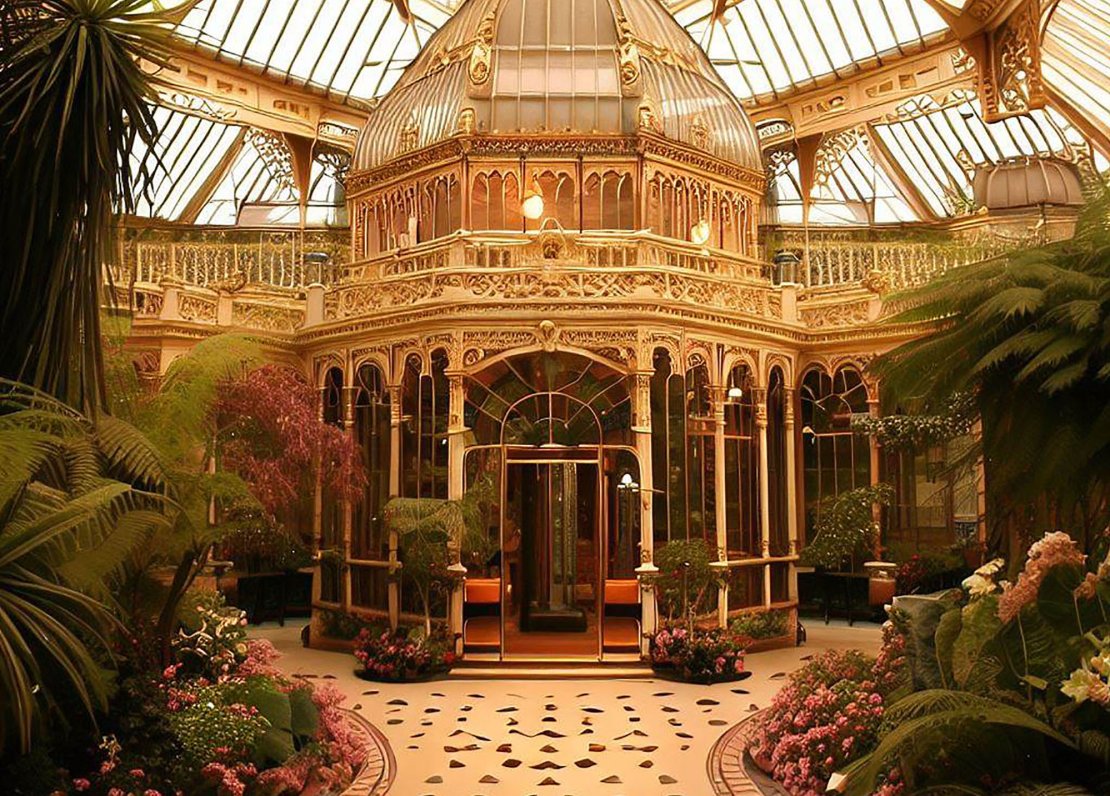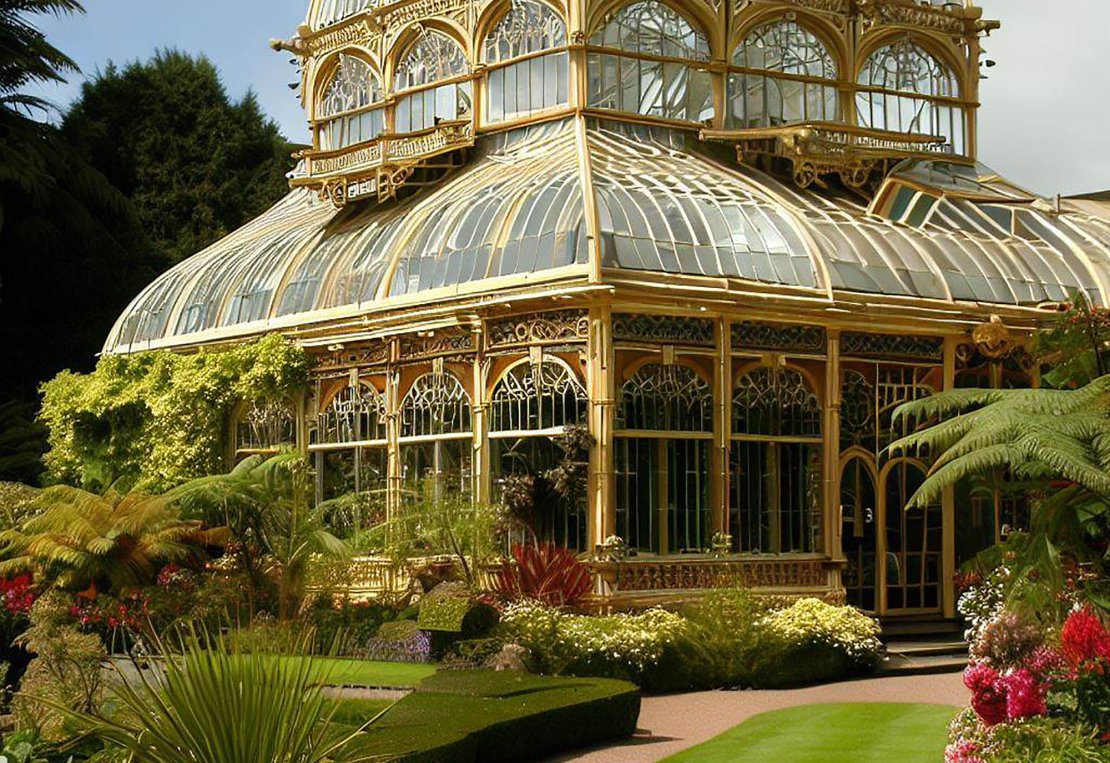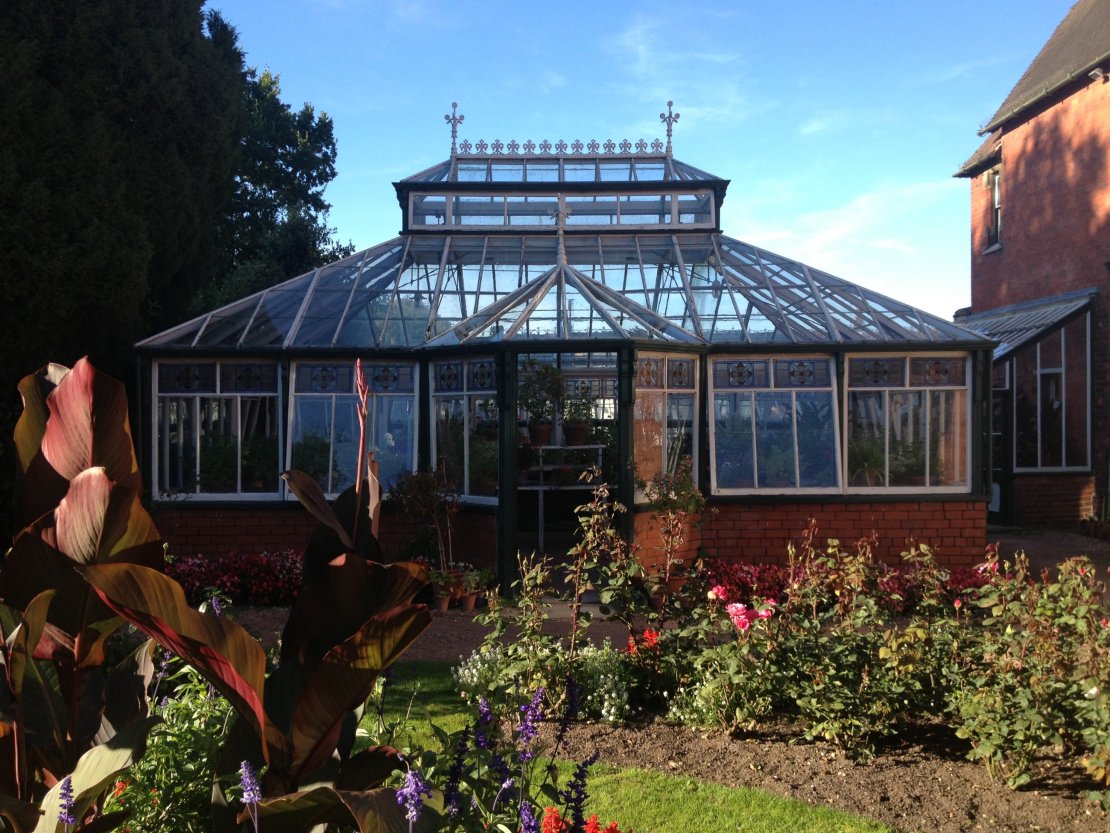Picture it: the sprawling English countryside, its lush landscapes awash with blossoms of every hue. Amidst the verdant splendour, the Victorian conservatory emerges as a symbol of the era's infatuation with exoticism. Built during the reign of Queen Victoria, these garden buildings served a dual purpose – a tribute to the natural world's wonders and a demonstration of human mastery over it and the perfect complement to the Victorian garden.
The Victorian conservatory embodied the collective ego of the Victorian era, a society intoxicated by its own grandiosity. It became an emblem of British imperialism, as explorers ventured to far-flung corners of the globe, returning with exotic plants and flowers that found their rightful place within these glass sanctuaries. The conservatory was a testament to both the botanist's zeal and the British Empire's dominion over nature.
These architectural gems were conceived as spaces of respite, where the British elite could indulge in a range of Victorian whimsical pursuits such as art, music, reading and crafts while ensconced within a controlled microcosm of nature. They offered a solace from the rigours of everyday life, a theatrical display of greenery and floral beauty that transported the visitor to distant lands, all within the confines of their very own country estate.

And yet, behind the veneer of opulence and horticultural splendour, the Victorian conservatory concealed a paradox. Its ostentatious display of wealth and power masked a deep-seated anxiety – the fear of nature's uncontrollable forces. These glass houses were a reflection of the Victorian desire to harness and conquer the natural world, a testament to man's yearning for dominance over the wild and unpredictable.
As the years passed and architectural tastes shifted, the Victorian conservatory fell out of favour. The rise of modernism brought about a new aesthetic sensibility that eschewed the ornate for the sleek and minimalist. The era of glass palaces receded into memory, replaced by the functionalism of the Bauhaus and the simplicity of the International Style.
Victorian conservatory styles
The design of the Victorian conservatory was characterised by meticulous attention to detail. Ornate ironwork formed delicate frameworks that supported the expanse of glass, while decorative motifs adorned every surface. These architectural masterpieces effortlessly blended function and beauty, their elegant proportions and intricate craftsmanship capturing the essence of the Victorian spirit.
The Victorian style conservatory became popular again in the 1980s enabling many people to increase the size of their house without planning permission. It can be adapted to look well on any kind of house or home, regardless of whether it was recently constructed or an older home if the right materials, proportions and design are chosen.
The Victorian conservatory, which often has three or five curved facets to the front of the roof, has an appealing look and is considered the epitome of an English-style conservatory. This design can be upgraded with a Celsius Solid Roof, even though the Victorian style lends a lovely shape to the overall structure.
The typical components of a Victorian indoor greenhouse include a high peaked roof with guttering for increased headroom, large glazed elements (often extending all the way to ground level, although a partial brick wall is also common), and a gable end door that leads to the porch entrance.

The architectural style of the Victorian Conservatory is both traditional and refined. Its facets provide a rounded and stylish appearance, achieved by softening the impression of its sharp, angled roof. Its adaptability and aesthetically beautiful design render it appropriate for any property, regardless of whether you choose three or five facets, styles with equal-sized or broad-faced openings.

The P-shaped and the T-shaped kinds of conservatories are two of the most common designs for this type of structure. A lean-to conservatory and a Victorian conservatory are the two main components that go into making a P-shaped style conservatory, which results in an appealing design that has a curved front. Many people use these handy add ons to their house structure as delightful dining rooms with dining room tables and 6 chairs, garden offices with desks and office chairs or even garden gyms with weights and benches.
The T-shaped style is comparable to the P-shaped form, but it differs in that it contains an additional segment on one side, giving it an overall 'T' shape. Both designs include a generous amount of space that can be filled with furniture and plants, making them perfect options for developing a cosy living area in a garden.
They are also ideally suited for larger gardens, providing you with an abundance of space in which to host guests and revel in the warmth of the sun. Victorian Conservatories in the P-Shaped and T-Shaped styles may both be wonderful additions to a house due to the elegant features they feature and the spacious interiors they provide.
The conservatory interior of whatever style is chosen usually encompasses a tiled floor and rattan conservatory furniture with conservatory decor kept neutral in terms of paint tones and soft furnishings.
There has been a boom in companies offering bespoke garden rooms, conservatories and log cabins and can help with the burning questions such as whether this add on is requiring planning permission, whether it will add value to your house and whether it can be fully insulated bearing in mind the structure is almost entirely made of glass. Many amateur artists use their conservatory as a garden studio due to the wealth of natural light that the modern garden rooms will bathe in.
Should you have a Victorian Style Greenhouse in your Garden?
A greenhouse or garden room designed in the Victorian era is not only emblematic of the greenhouse aesthetic but is also regarded as one of the finest examples of greenhouse cultivation.
Due to the high cost of glass during the Victorian era, greenhouses were almost exclusively owned by wealthy people as a sign of their privilege and position during that time. The structures were intricate and captivating, serving as the focal point of each and every garden. Now these add ons are accessible to most people.

The Victorians were the undoubtedly the true masters of English garden design, and just like the Romans, their architectural prowess brought us ideas that are difficult to top even today, more than a hundred years after they were created.
However, even as the Victorian conservatory became a relic of a bygone era, its spirit lives on. In the gardens of stately homes and public parks, the remnants of these grand structures still bear witness to the ambitions and aspirations of a time long past. They stand as reminders of a society enthralled by the wonders of the natural world, and yet perpetually yearning for control.
Today, the Victorian conservatory continues to captivate the imagination of those who encounter its fragile beauty. It serves as a testament to the harmonious coexistence of nature and human ego, reminding us of the delicate dance between the two. The rise of the Victorian conservatory represents an epoch in architectural history where man sought to tame the wild, only to discover that true beauty lies in the untamed.
These days, a Victorian greenhouse is not only a place to cultivate rare plants but also a haven where one may find solace and unwind.

Be the first to add a comment...